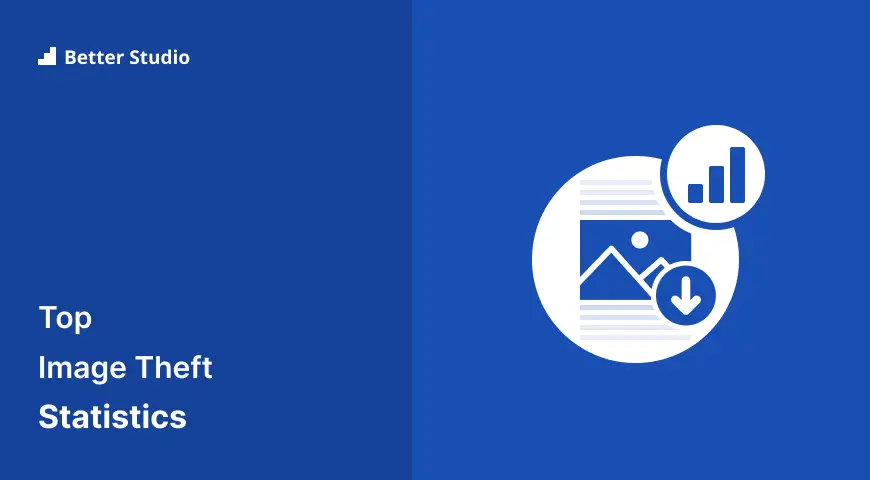What methods were used to steal images from photographers in 2023?
Most photographers have experienced image theft at least once. However, these results have made me realize that I have never imagined the frequency of such incidents.
Theft of images is a serious concern for several photographers, and although Google has made some attempts to curb the practice through Google Images, it remains a concern for many.
In this article, I have collected some interesting statistics and facts about the theft of images and the damage it can cause to photographers.
Online Image Theft Statistics (Editor’s Choice)
- A total of 2.5 billion images are stolen every day
- Every day, image theft costs 536.5 billion Euros
- 64% of professional photographers reported theft more than 200 times
- Social media users and bloggers steal 49% of images online
- 64% of photographers experience image theft, but 33% do not take legal action
- Disabling right-click menu is the best way to protect against image theft
- The watermarks of 68% of stolen photographers were removed
- Nearly 40% of full-time photographers cannot afford to take legal action
- U.S. leads in illegal image use with 33.90 percent
- Unlicensed images are typically 1920 x 1080 HD size
Important Note: You may be surprised by these stats if you are a photographer. We suggest you review our definitive guides on protecting your images from theft and preventing content theft. You will learn all the methods of protecting images online step-by-step.
1. Image Theft Statistics
This is a general summary of the online image theft statistics for the past couple of years:
What percentage of the images shared online is stolen?
Studies by IMGembed and Copytrack show that of the three billion images shared online daily, around 85% are unlicensed. That’s a total of around 2.5 billion stolen images!
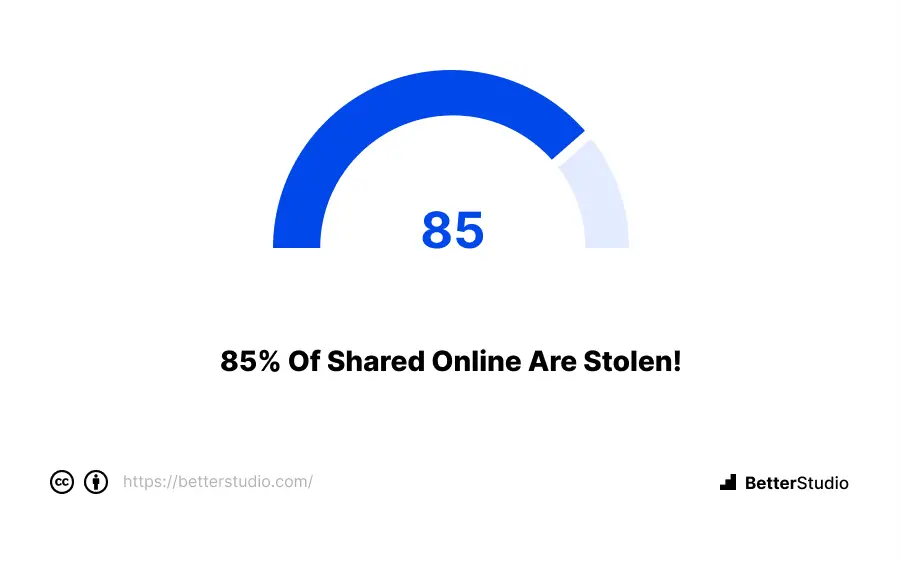

How many images are stolen daily?
The total number of stolen images is approximately 2.5 billion daily.
How much is image theft costing the world?
According to estimates, image theft costs the world 536.5 billion Euros daily!
Artists, photographers, publishers, and image agencies aren’t always aware that their photos are stolen.
How many professional photographers reported theft?
It was found that 64 percent of professional photographers reported theft more than 200 times. Forty-four percent of hobbyists reported theft as well.
How much does each stolen image cost for photographers?
Every time a professional picture is stolen and used illegally, photographers and agencies lose $446.
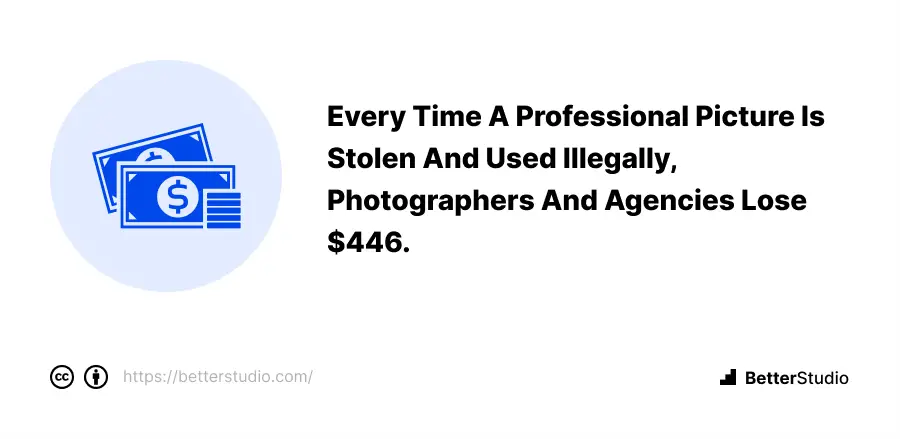

What’s the best way to protect your images online?
Disabling right click on your website and images are the best way to prevent visitors from downloading the content to their computers.
To prevent disabling right-click menu, you can use the WPShield Content Protector plugin for WordPress.
Images are stolen the most by who?
The most popular photo thieves online are the following:
1- 49% Bloggers and social media users
2- 28% Commercial businesses
3- 11% Individual professionals
4- 12% others
A few Google practices have already been implemented, so it’s harder to download images, such as blocking image URL links.
Although this can frustrate thieves, it won’t stop image theft. Much more could and should be done. You’d be surprised how often we hear, “I found it on Google, so I can use it for free.”
What percentage of photographers have experienced image theft?
The statistics from 2016 show that 64% of photographers have experienced image theft, and 33% never took legal action when they discovered someone stole their picture.
What’s the best way for photographers to protect their photos?
2- Disable right click on your website
3- Add copyright notice or DMCA badges to your site
Photographers didn’t experience image theft more than 50 times last year, but the amount still exceeded expectations.
Memes are created with stolen photos?
It’s common for stolen images to be tagged with funny or cruel captions and circulated on the internet
2. Image Watermarking and Image Theft Stats
I would like to share the following statistics regarding the robbery of watermarked images online.
What percentage of the time did watermarks be removed?
Photographers whose work was stolen had their watermarks removed 68% of the time!
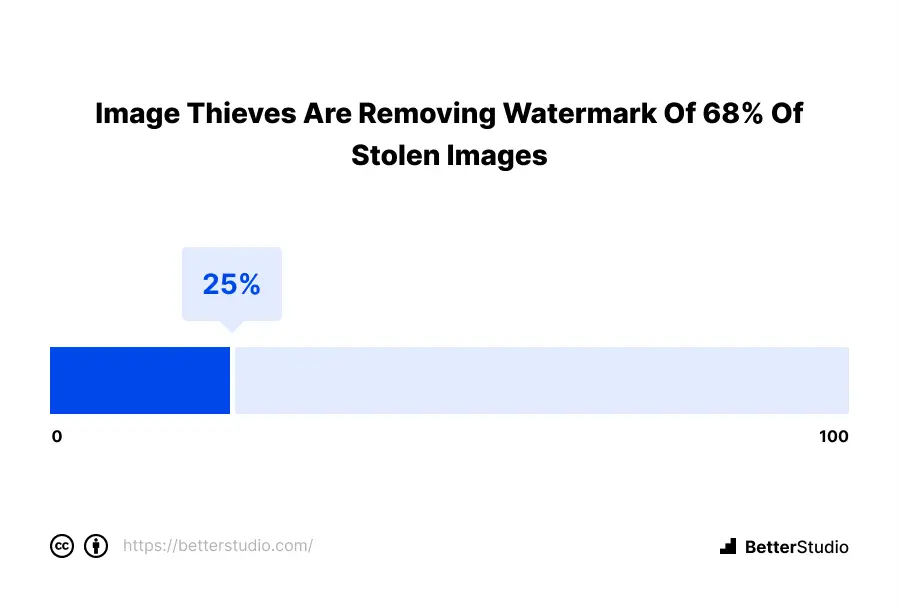

Does watermarking images assist in court proceedings?
When a court finds that a watermark was removed, it’s way more likely to result in compensation for the photographer since it shows willful copyright infringement.
3. Image Theft DMCA Takedown Stats
I would like to share the following statistics regarding DMCA takedowns of stolen images and some interesting statistics regarding stolen images in court proceedings.
How many photographers call out image thieves?
There are 22% of photographers call out image thieves, and 49% shame them on social media because they don’t have time or legal resources.
How many full-time photographers can’t afford legal action?
41% of full-time photographers can’t afford legal action or don’t have the time.
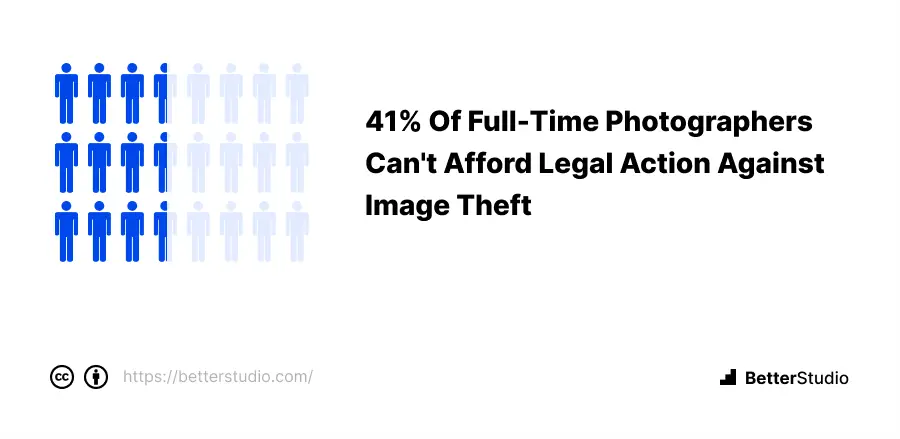

What do photographers earn on average when they protect their photos?
There are 15% of photographers who earn over $1000 a year resolving image theft
How many photographers could afford a legal team for image theft?
The study revealed that only 22% of photographers could afford a legal team, and the numbers get even worse for full-time photographers.
In the absence of compensation or in the event that an infringer is unresponsive, DMCA takedowns may be the best option.
What is the problem with DMCA takedowns?
There is a problem with DMCA takedowns, as it can take between 15-20 minutes to research the contact information of an infringer and draft a single takedown notification.
Has any photographer been successful in a court of law against a thief?
In 2015, Jeff Werner filed a successful suit against clickbait site ViralNova for the use and profit of his images.
As a result of their use and profiting from his photographs without his permission or credit, he took legal action. The graphic representations in his court documents offer a clear picture of how image theft can appear in court and how extensive it can be if proven.
What is the most challenging part of the stolen photographs that you are attempting to find?
Despite your best efforts, in the event that you believe that you have accomplished due diligence and investigated image theft online for your images, keep in mind that 72% of the stolen photographs by other businesses are altered, making it more difficult for you to find them.
4. Image Theft and Social Media Stats
The following statistics relate specifically to social media and image theft, and I would like to share with you some of them:
What is the most common type of photo theft?
The most common type of photo theft occurs via platforms such as Instagram, Pinterest, and Tumblr, followed by commercial businesses and individual professionals.
Which social media sites are being used to steal images online?
Pinterest is the most used social media site for image theft.
Top Social Media Sites for Image Theft
Most social media used for image theft are the following:
1- Pinterest 41%
2- Youtube 19%
3- Tumblr 15%
4- Facebook 2%
5- Twitter 1%
6- Instagram 1%
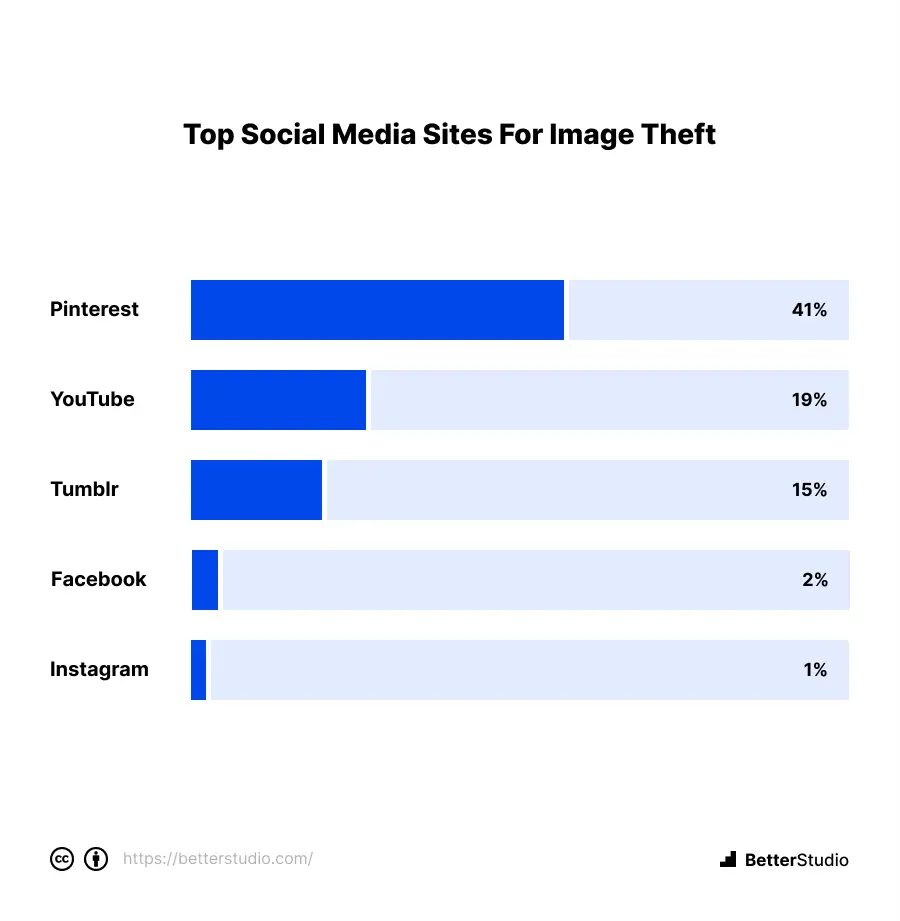

5. Image Theft Statistics in Countries & Continents
The following is a list of image theft statistics worldwide based on continents and countries, along with the percentage of thieves per country.
Top Image Theft by Continents
33.90% of illegal image use is committed in North America, the third biggest continent in the world. Europe gets the second spot on the list with 31.40 percent infringers, and Asia gets the third spot with 29.38 percent infringers.
Top Image Theft by Countries
The top 10 countries in terms of most image infringement are the USA at 22.96%, Panama at 6.76%, China at 6.47%, Germany at 6.32%, the UK at 3.75%, Indonesia at 3.53%, Japan at 3.33%, Italy at 2.09%, and Russia at 3.04%.
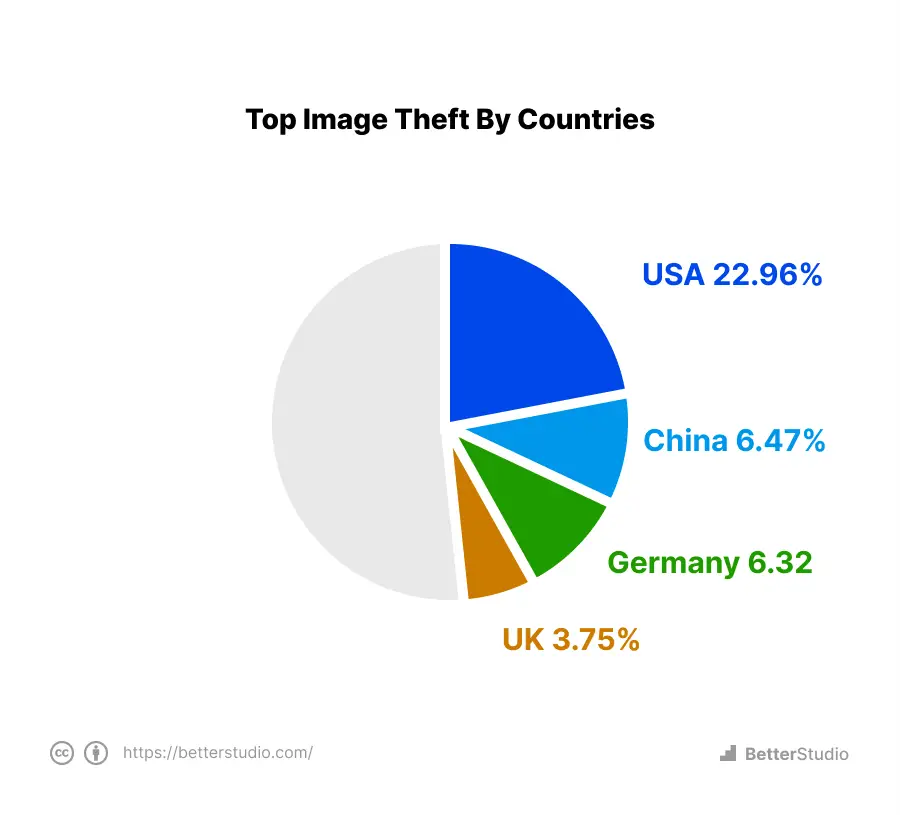

Which country has the biggest image theft problem?
Comparing countries, the US is the world’s leading image thief, with 22.96% of all hits.
6. Image Theft Statistics by Images Sizes
Following are the statistics regarding image robbery by image size. You can determine which sizes are the most commonly stolen.
What is the most common size used for image theft?
For unlicensed images, it’s most common to use 1920 x 1080 HD size.
For things like wallpapers and large photo galleries, users like this format when the screen needs to be filled.
People are mostly concerned about ripping off photos for display on screens because the most popular resolution of infringed photos is 1920 x 1080.
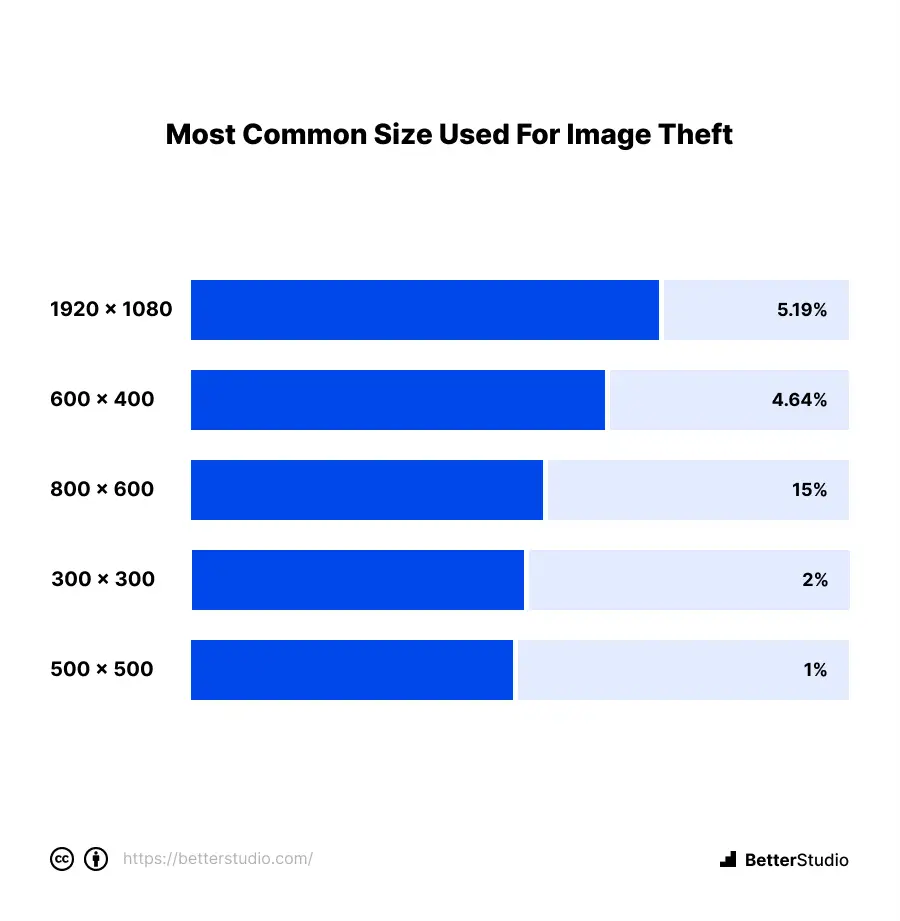

7. Image Theft Statistics by Domain Names
The following statistics are based on the domain names pertaining to image theft and downloads:
83.6 percent of all unlicensed images are downloaded from the .com domain.
What are the 10 most common domains for image theft?
Domains that end in .com are extremely popular among companies and individuals throughout the world, and there are no geographic restrictions imposed at registration.
Accordingly, it’s no surprise that this domain comes first with 48.76 percent of all unlicensed image use. Following a large gap, the .net domain, which is also used internationally, takes second place.
A German .de domain doesn’t come up until third place. You’ll find a mix of international and local domains in the top ten, including .ru Russia, .org, .it Italy, and .info, .jp Japan, .co.uk United Kingdom, and .pl, the top-level domain used in Polandoland, .pl.
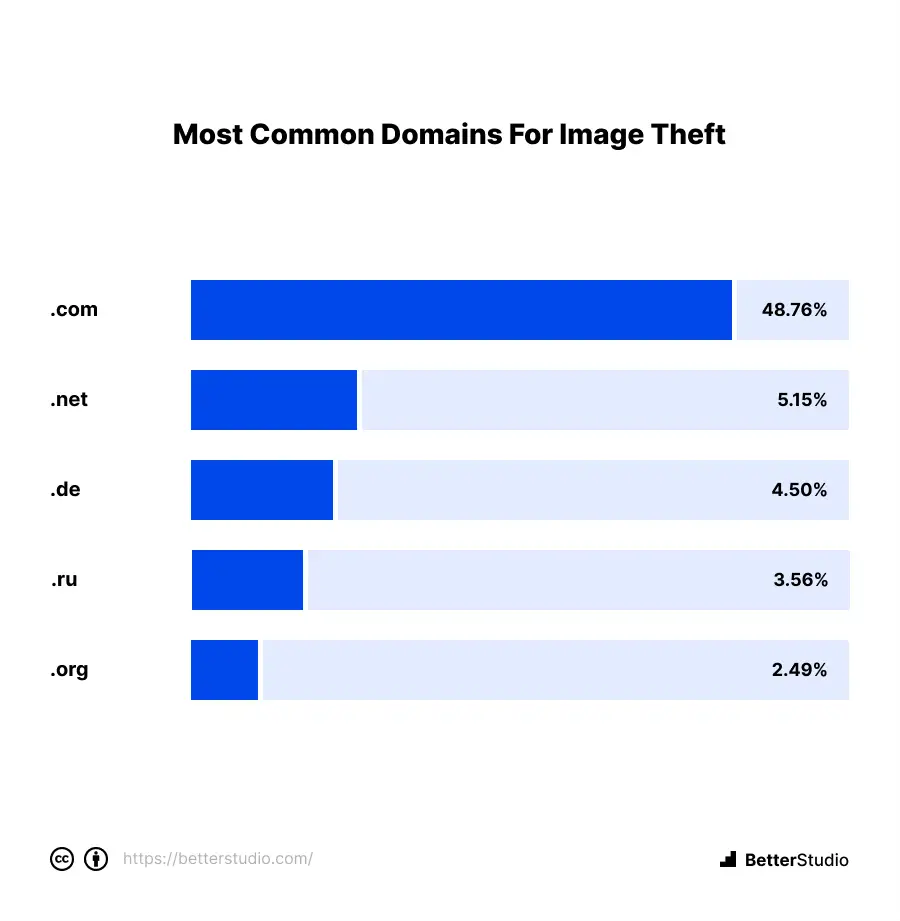

Conclusion
Okay, I have categorized the statistics and facts on online image theft and evaluated their accuracy.
Important Note: You may be surprised by these stats if you are a photographer. We suggest you review our definitive guide on protecting your images from theft. You will learn all the methods of protecting images online in a step-by-step method.
Share opinions in the comments below or check out more BetterStudio stat articles.



